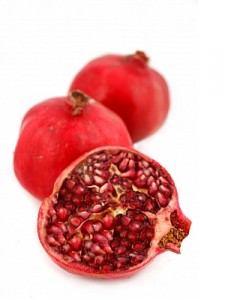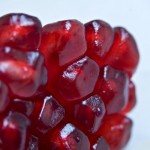Here in Maine, we mostly see pomegranates as a fall fruit and an addition to the Thanksgiving table. Of course, with their recent elevation as an anti-oxidant, you can find pomegranate juice and extract in lots of different products at regular grocery stores, not just health food places.
Here’s an interesting look at pomegranates from the outside. This is from the Health section of the July issue of National Geographic. The Maine state website has a page that discusses MRSA and gives information on avoiding this bacterial infection.
Packing a Punch
 Pomegranates are famous for their jewel-like seeds, whose rich antioxidant stores may help prevent heart disease and certain types of cancer. But some of their most promising health benefits could dwell within their inedible rinds.
Pomegranates are famous for their jewel-like seeds, whose rich antioxidant stores may help prevent heart disease and certain types of cancer. But some of their most promising health benefits could dwell within their inedible rinds.
A group of Kingston University researchers in London found that a mixture of pomegranate-rind extract, copper salts, and vitamin C can significantly reduce the growth of some common hospital bacteria. Declan Naughton, head of the study, says the fruit could be a new weapon in the battle against methicillin-resistant Staphylococcus aureus (MRSA), which can cause serious skin, blood, and soft-tissue infections. Ironically, the antibiotics used to banish MRSA have spawned even heartier strains—and more people outside of hospitals are catching it.
The high levels of antimicrobials in pomegranate rind that protect the fruit’s flesh from harmful bacteria might do the same for humans, says Naughton. An ideal application, with further research, could be an ointment for cuts, abrasions, or surgical wounds. “Once something gets inside your bloodstream, it’s difficult to treat,” he notes. Another potential benefit: “We don’t think it would have major side effects, because we’ve looked to nature to show the way.” —Cara Birnbaum